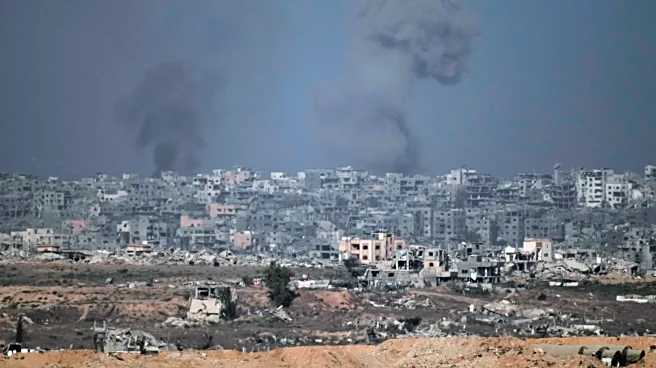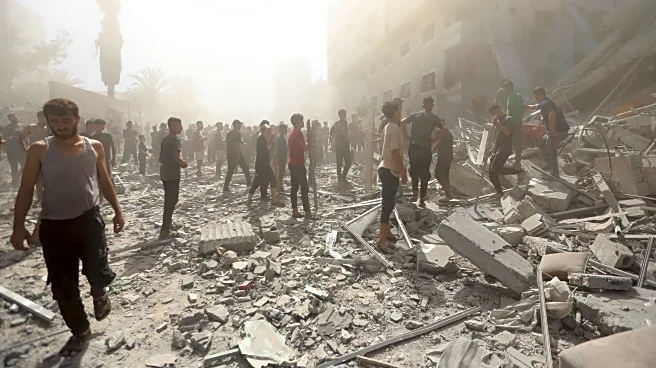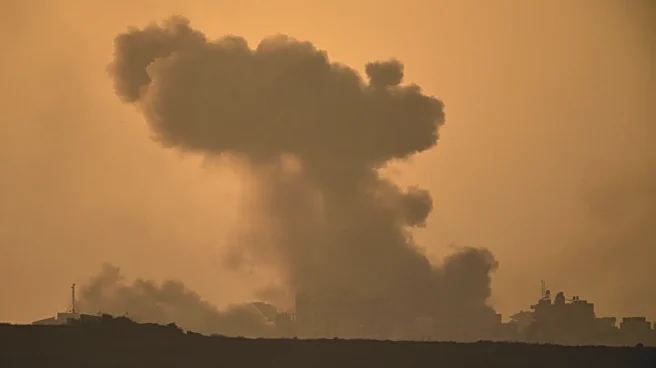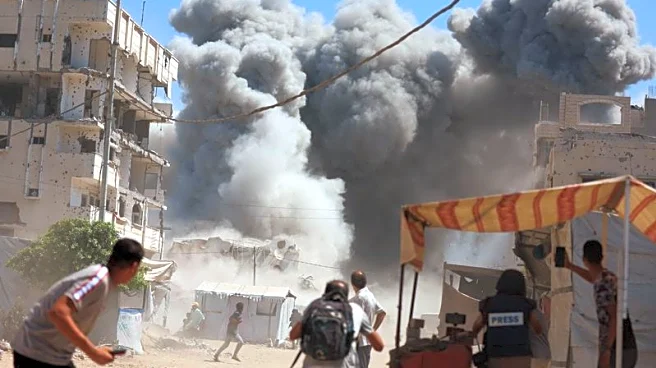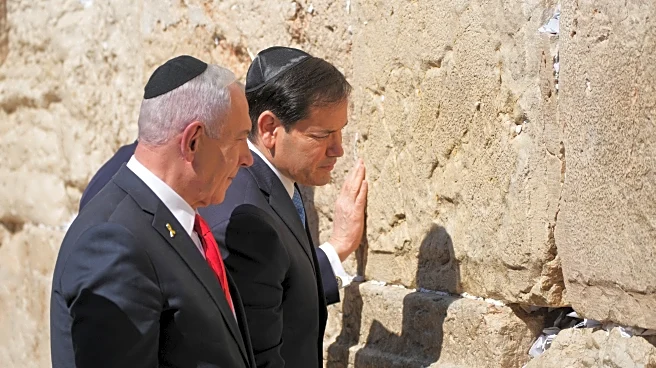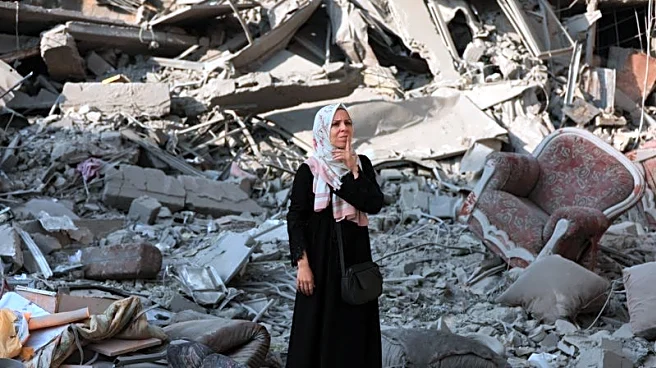What's Happening?
In a last-minute operation, aid workers successfully evacuated thousands of archaeological artifacts from a warehouse in Gaza City before it was destroyed by an Israeli airstrike. The artifacts, which include items from a 4th-century Byzantine monastery, were moved to a safer location after nine hours of negotiation with the Israeli military. The warehouse was targeted due to its alleged use by Hamas for intelligence operations. The rescue operation was complicated by the lack of available transport and the ongoing military operations in the area.
Why It's Important?
The rescue of these artifacts is significant as they represent a crucial part of both Palestinian and world heritage, with some items dating back 6,000 years. The operation highlights the challenges of preserving cultural heritage in conflict zones, where such sites are often at risk of destruction. The artifacts' preservation is vital for historical and cultural research, and their loss would have been a significant blow to the understanding of early Christian history in the region. This event also raises questions about the prioritization of resources in conflict zones, balancing cultural preservation with immediate humanitarian needs.
Beyond the Headlines
The operation underscores the ethical dilemmas faced by humanitarian organizations in conflict zones, where resources are limited, and the risks are high. The decision to prioritize the rescue of cultural artifacts over other humanitarian needs, such as food and medicine, reflects the complex considerations involved in such situations. Additionally, the destruction of cultural heritage sites can have long-term impacts on cultural identity and historical knowledge, making their preservation a matter of global concern.

